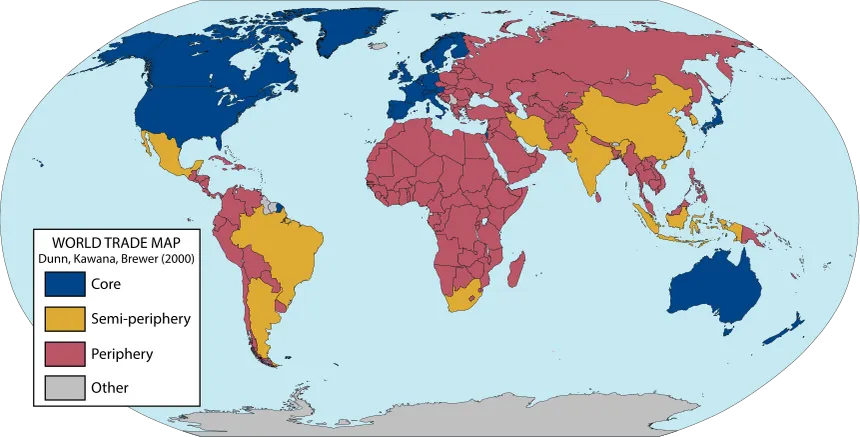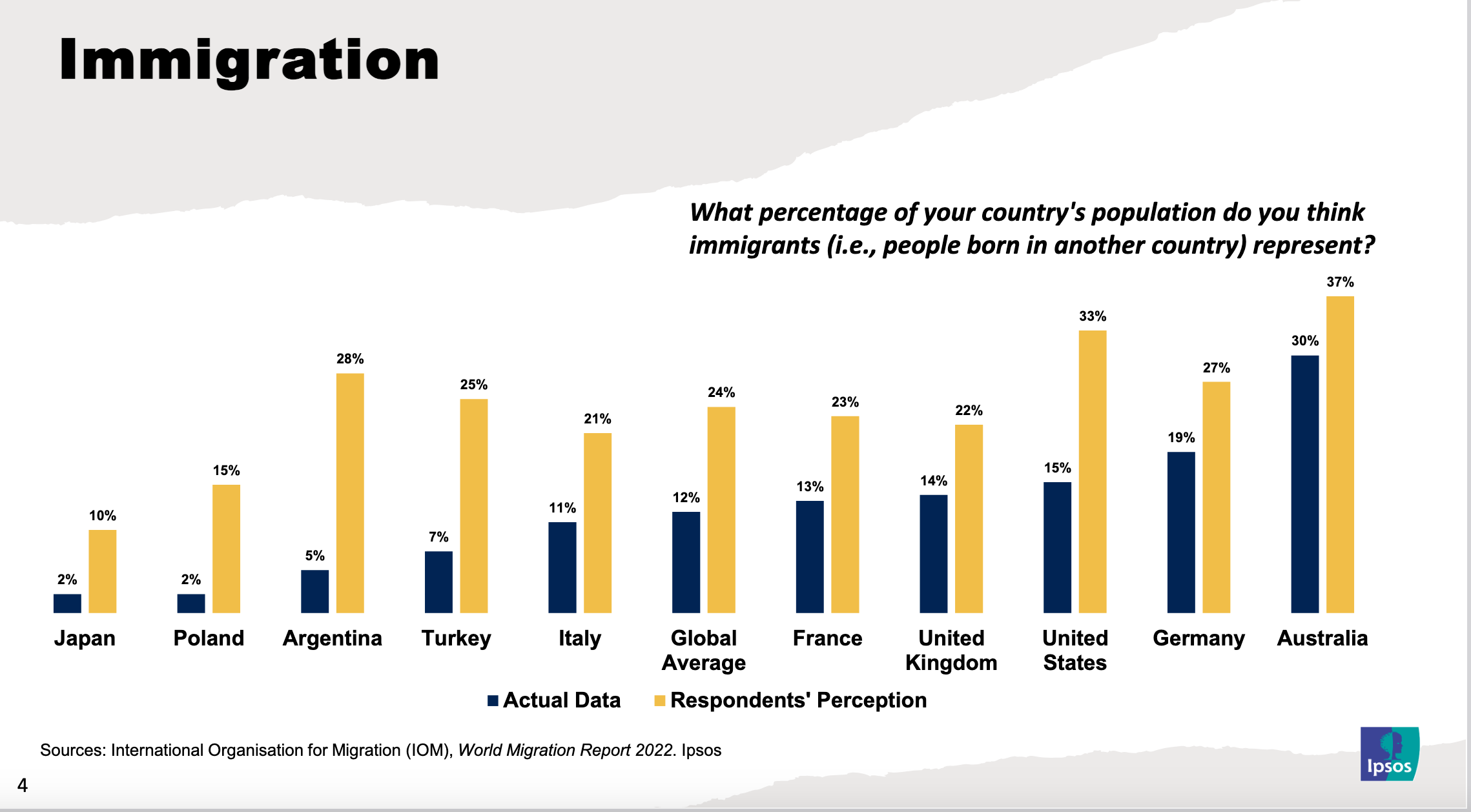translation: There are people conjuring thoughts like “I’ve seen one too many brown people”.
Also unsurprising where the sentiment is coming from:

srcs:
- https://www.ipsos.com/en/perils/perils-perception-prejudice-and-conspiracy-theories-0
- https://ourworldindata.org/data-insights/many-people-overestimate-the-percentage-of-immigrants-in-their-country
More imbecility (from the same src):




10% off isn’t bad for a casual onlooker at their community. That’s 90% accurate.
Right, but those estimates aren’t 10% off, but closer to at least 10 percentage points off – percent and percentage points are not the same thing.
Even Australia is ~23% off, and eg. Germany is 42% off, the US is 120% off, UK is 57% off, and eg. Poland is a whopping 650% off
People don’t give precise percentages though when surveyed. They might round to typical fractions like 1/4, 1/3, or they might round to 10 or 20 percent.
Nobody is saying “hmm, I estimate that it would be approximately 37 percent”.
Of course the wisdom of the crowd does wonders for smoothing those coarse estimates, but still, if the crowd is +/- 10 of the real percentage value, I’d say they’re pretty much on the money.
Anyway, Poland, wtf.
Oh yes absolutely, people would definitely just “eyeball” their estimate and the percentages we see in the graphs are population (well, sample) level averages, but I’d still say that the differences between these average estimates and actual reality are by and large much worse that “on the money”. To illustrate, if the estimate for some country was eg. 30% and the real proportion 40%, the relative error – off by a factor of 1.33 – would be smaller than if the estimate is 12% and the real value 2% – off by a factor of 6 – even though both have a 10 point error.
So eg Poles’ and Argentinians’ estimates are both 12 percentage points off, but because Poland’s immigrant population is smaller that means that they overestimated its real size by 650% and so their estimate was 7.5x higher, but Argentinians were “only” off by 460% / 5.6x. 'Strayans were off by 7 points, but their relative error was only around 23%, which is still almost a 1/4 error and their estimate looks like it was the best out of these. The average global error was 100%, so on average people think there’s 2x as many immigrants as there actually are, and characterizing that as “pretty much on the money” is, well, maybe a bit generous